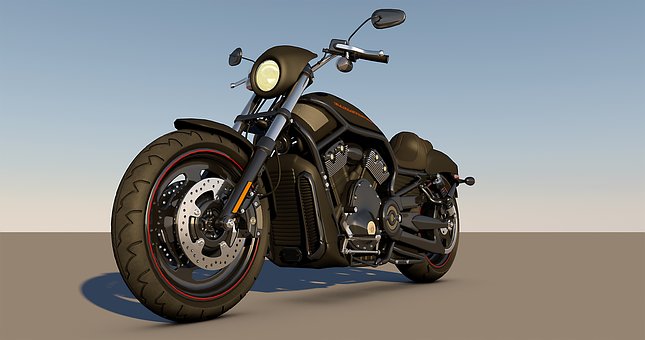How the Right Auto Detailing Supplies Can Cut Down Water Consumption

How the Right Auto Detailing Supplies Can Cut Down Water Consumption
Traditional mobile car wash businesses have always set aside a large part of their budget for water utility payments and costs related to collection and disposal of dirty water as part of post car wash cleanup. These businesses use large amounts of water and must recycle them in waste bins for proper disposal to eliminate being fined by the EPA. Not only water treatment post-cleaning, but also availability of water becomes a concern for many mobile car washing businesses, which have to visit client locations for washing cars. The client may not like their parking area to be left wet with dirty water.
There is a sensible solution to these problems: reducing water consumption. With less water used, less money is needed for clean up. This also reduces water bills. Besides decreasing costs for your mobile car washing business, reduced water use also has a huge environment impact. You can further minimize damage to the environment by using plant-derived auto detailing supplies instead of chemical-based detergents for cleaning upholstery, seats, engines, wheels, windscreen, exterior, and other car parts.
There is a third benefit of using less water. Machines with low flow technologies use less water, allowing carpets to dry faster. This is important because moist carpets encourage the growth of germs and mold and lead to unhygienic conditions and bad odor inside the car if left damp for extended periods of time.

Different Types of Low Flow Vehicle Detailing Equipment
We have listed the benefits of low flow auto detailing products. There are essentially two types of low flow machines for car cleaning: pressure washers and carpet cleaners.
When purchasing a portable car wash machine, such as a pressure washer, pay attention to the amount of water needed for cleaning. Most machines have flow rates between 2 and 5 GPM. Low flow machines, on the other hand, restrict the water flow to as little as 0.5 GPM.
Heat is another important factor in these machines. High temperatures can remove grease, ice, oil residues, and stains, which water at lower temperature cannot. Steam pressure washers, for example, can reach 300F to virtually melt away stubborn deposits on vehicles. Pressure level is another important consideration, as it should not exceed 1500 psi to ensure the safety of vehicle surfaces.
These machines not only use less water, but also lower pressure levels to prevent damage to the car body. These mobile car wash machines can be used for cleaning the engine, windows, painted surfaces, wheels, tires, and other parts. Many auto detailing machines can even be used for steam cleaning, the only difference from traditional steam cleaners being that they use wet steam instead of dry vapor. This is a very important feature for mobile car washing services, because dry steam damages the painted surface when the user is forced to repeatedly rub it with detailing brushes to achieve cleanliness. Low flow machines, therefore, offer the same or greater benefits to mobile car washing services as machines with higher flow rates.
While low flow pressure cleaners are ideal for exterior cleaning, low flow carpet cleaners are the ultimate solution to interior detailing. Some low flow carpet cleaners, for example, use water at 210F to achieve proper cleaning even in the absence of gallons of water. Such high temperatures work effectively to dissolve stains and residues settled deep within carpet and upholstery fibers. This does not mean that all low flow machines necessarily feature high temperatures. You can purchase non-heated machines if your carpet cleaning requirements are limited to basic dust, dirt, or odor removal.
Low flow technology within carpet extractors also enhances drying time. By using less water without reducing cleaning, carpets can be cleaned while left to dry in 2-6 hours. This is in contrast to the 24 hours required by conventional shampooers, a time frame that may lead to the development of mold, mildew, bacteria, and pungent odors.
An added cleaning solution is important when selecting carpet cleaners, as it is required for complete care. Green carpet cleaning formulas are suggested, as they work to dissolve, encapsulate, and crystallize dirt particles for complete extraction. Pre-spray carpets with the solution and let dwell before applying the carpet cleaner for best results.
Whether you are seeking machines to clean the interior or exterior of vehicles, remember that low flow technology is key.
http://www.articlesbase.com/cars-articles/how-the-right-auto-detailing-supplies-can-cut-down-water-consumption-2671830.html Where to find an auto loan if you have bad credit or no credit Carhartt Women Coats & Jackets Chiropractic Care for the Whole Family Donate Your Automobile For Tax Deduction Purposes Rendering through cheap and qualitative automotive accessories Knowing Every Aspect Of Cheap Car Insurance Debit Card Loans: Maximum Funds With Maximum Benefit Blackcard Review & Coupon Code Auto Insurance Can Help Protect You Goa Carnival Tour Buy Auto Leads For A Successful Automobile Business A Guide To Organic Skin Care Gifts This Holiday Period What Are Some Shopping Strategies for Buying Cheap Auto Insurance Online?